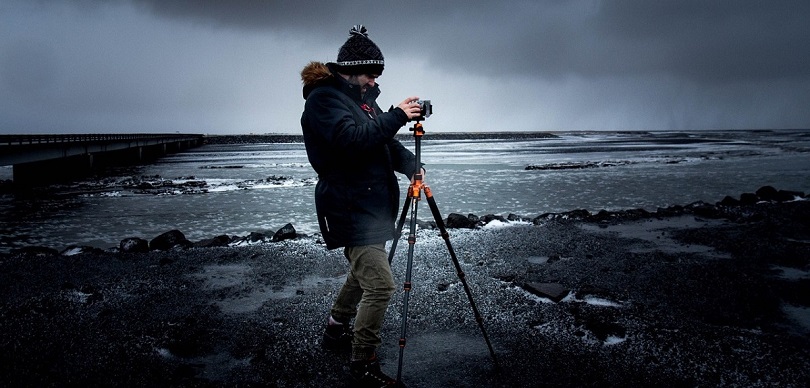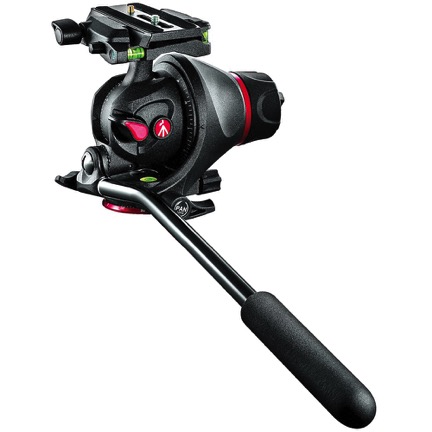
Tripods
As far as accessories go (i.e., things beyond the camera and lens), having a go-to tripod is one of the most important things to have in your bag. Not every occasion or even every trip requires a tripod, but there are many instances when they are indispensable.
Night photography, landscape photography, and slow shutter speed photography are all prime examples, but as you develop an understanding of your tripod, how to use it, and get out more and more to practice photos with it, you’ll likely find new applications where it quickly becomes one of your favorite tools. Whether a big lens is in your future, or you take a liking to macro photography, investing in a good tripod will expand your abilities and interests to a new level.

When it comes to tripods, the adage you get what you pay for is pretty spot on. When you invest a little more money, you’ll get a lighter, easier-to-use setup. A better tripod will be sturdier, more compact, or more durable. The trick is to find out what you’re willing to pay, and do the research to get the best combination of the above if you have to compromise. For travel, you will often sacrifice something so that it can be a little lighter and a little more compact.
A tripod is essentially two parts, the legs and the head. When getting something on the fancier end of things ($150+), you’ll likely be picking out each part separately.
When researching tripod legs, there are many many options out there. Many brands, many price ranges, many materials they’re made of, etc. For travel photography, you will want to choose a tripod that folds down into minimum size and weight. Often, with those tripods with a rigid middle post (inside the three legs that spread out) you’ll find that the minimum size is still rather large. In addition, these extra posts are short cuts to stability and usually denote a “less-than-stable” tripod. This is not always the case, but is often the case.
Sticker shock is a common symptom of shopping for tripods. Two tripods that can look identical next to one another can vary by hundreds of dollars. This is usually due to the materials used and the overall quality of construction. These things will impact the overall stability, durability, and packability of the tripod, so looking for the bargain could compromise your overall satisfaction of the tripod.
Carbon fiber is no doubt the cream of the crop, being very stable and very lightweight. In addition, it reduces small vibrations that can transfer from the ground to the camera (but this is really a minor benefit, not worth buying strictly for this reason). The main reason will be it weighs much less than other materials like aluminum.
The overall construction of a tripod is also very important to the lasting quality, not to mention whether you are happy using it from trip to trip or day to day. How precise the rivets are made, and how secure the latches are play a big part in overall quality. It’s tempting to purchase camera gear from online, and this tends to work just fine with camera bodies, lenses, and other accessories. However because a tripod is a mechanical accessory, it’s quite important for you to really assess the tripod for its weight, size, and especially moving parts. For instance, do you like the way the legs compress with latches, or would you rather have the legs twist down? Are the legs too small or the tripod too short to reach your eye level? (a common thing to think about with smaller travel-style tripods). More than any other piece of camera gear, it’s key to get to your local camera shop and try out the tripod before you buy. You’ll quickly know whether it’ll work for you or not.

The tripod head is even more important for usability, as it’s what you have the most contact with when taking photo after photo. The idea behind a tripod head is that you can move your camera to make minor adjustments without having to fully reposition or readjust the legs. There are several styles of heads, and just like the legs they can range in size, prices, and durability. For the sake of this page, though, we will outline the basic styles rather than get into specific models (there are literally hundreds!).
No style of head is perfect, so the pros and cons will be addressed in the sections below.

The most popular style is the ball head. The exact latching mechanism to lock the ball into place can vary based on brand and model, but the overall idea is similar to a ball and socket – kind of like what we have in our joints. The ball can move and float freely, with range of motion limited only by the casing. Then, a small screw or bolt can be tightened to lock the ball from moving once the camera is in position. The benefit of this time of head is that it is simple, lightweight, and has few working parts that can get damaged or fail over time. The downside is that sometimes it can be cumbersome to hold the camera in one hand to align it, and then use the other hand to tighten the bolt. It sounds elementary, but is something to practice with prior to purchasing this style of head.

A style that has adopted the basic function of the ball head, but changed how the user loosens and tightens the ball itself is the “pistol grip” or “trigger grip “head. What we have here is the same idea, with a ball and socket design, but instead of the often-cumbersome bolt dial used to tighten and loosen the ball, a simple squeeze mechanism is used allowing for basically a one touch tighten and loosen feature. The benefit of this method is that it’s very quick, easy, and reliable to work. The downside is that because of the size, it’s adds weight to the overall system, and is a little less packable when traveling. However, this is indeed the head that the author of this page uses – and highly recommends it!

The third major category of tripod heads lends itself more to the video realm, but can be quite effective for those wanting one head to do both smooth panning for video and small adjustments for photography. This is known as a pan/tilt head. Just as with the above two, there are many versions and iterations of this style of head, but the idea is the same. Sometimes also known as a fluid head, it has internal gears and bearings that buffer against jerky motions when moving up, down, and side to side. While it’s a bit slower to make major adjustments for photography, it does allow for wonderful video work when adding movement to your clip.
The primary benefit to this type of head is that it’s quite versatile. If you take video alongside photos, this offers a singular solution for anything that comes your way. In addition, because the head has built in a certain amount of resistance when moving, it’s great for making easy small adjustments. The downside of this head is that it can be quite heavy and overkill if you have no plans for taking video.

Monopods tend to be a popular consideration when it comes to nature and wildlife trips. For those that are not familiar with them, they are essentially one leg of a tripod with a small mount on top to hold a camera. The primary purpose is to minimize size and weight, while allowing for some stabilization and comfort when photographing.
With the advent of new internal stabilization on most lenses, and the making of smaller, lighter zoom lenses, monopods are not as necessary or popular as they used to be. However, they are indeed light and easy to pack, and double as a walking stick. Plus, if you plan on holding a large camera and lens for a long time, they can be a life safer. Nevertheless, if you don’t plan on being in a wildlife blind, or open field for a long time with a heavy lens, they don’t really offer enough to bring one in addition to, or to replace your tripod.
Recap
- With tripods, you tend to get what you pay for.
- When shopping for a tripod, be sure to try it before you buy it, as seemingly simple operation can be difficult when doing so over and over again.
- Invest in a tripod that you enjoy using. If it feels cumbersome now in a store, it will feel much worse when shooting in the wind and snow with a backpack on, trembling from the excitement of having a male polar bear 20 feet from the tip of your lens!


